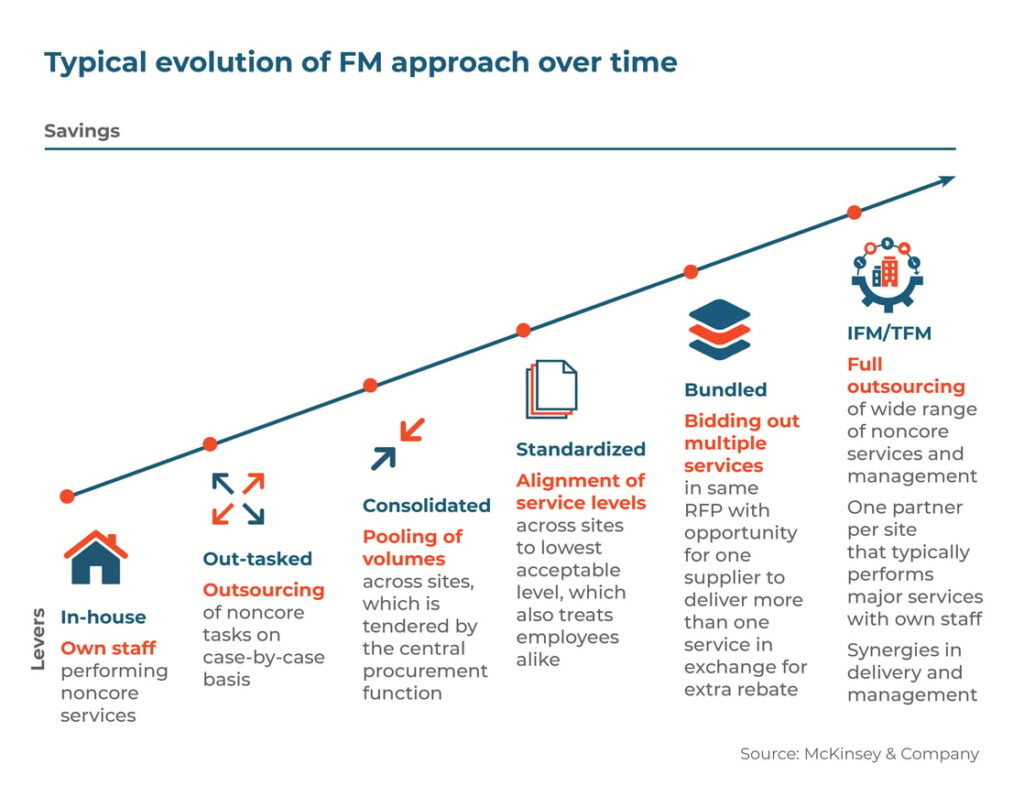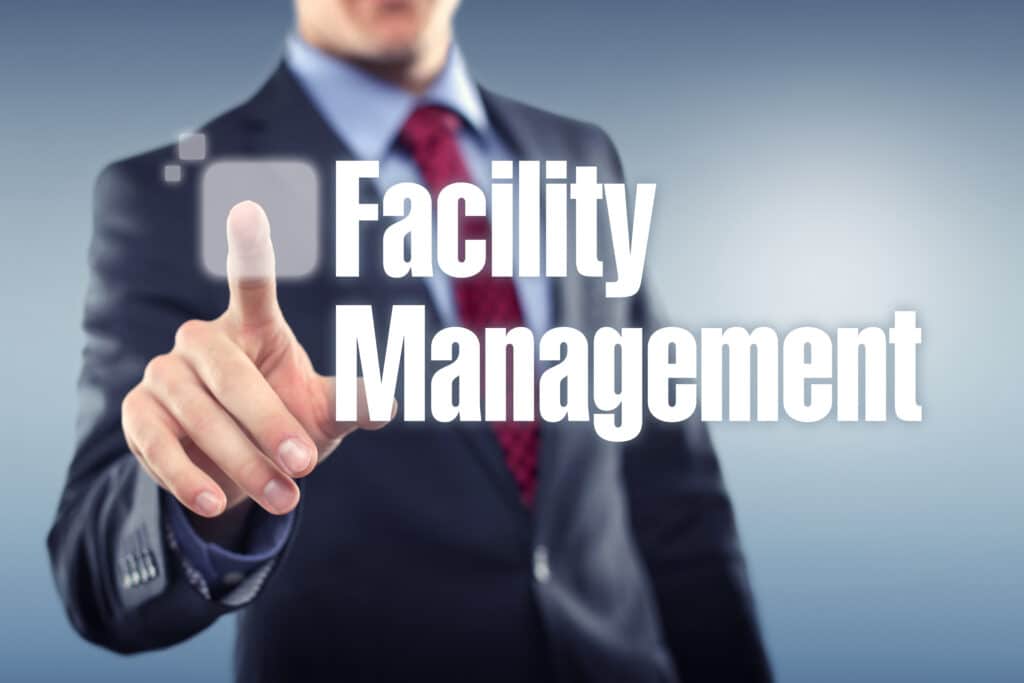How Total Facility Management Enhances Workplace Efficiency and Cost Efficiency
How Total Facility Management Enhances Workplace Efficiency and Cost Efficiency
Blog Article
Leading Benefits of Total Facility Management for Streamlined Procedures
Total Facility Management (TFM) stands for a calculated technique to improving functional effectiveness by incorporating different services, such as maintenance and security, under a unified management structure. The concern continues to be: what certain advantages can companies harness from adopting TFM, and just how might these benefits transform their functional landscape?
Enhanced Functional Effectiveness
Improved functional effectiveness is a primary advantage of implementing total facility management (TFM) methods. TFM encompasses a detailed approach to handling a center's sources, processes, and framework, ultimately improving procedures. By settling various services-- such as upkeep, area, cleaning, and security management-- TFM decreases redundancies and boosts sychronisation among different operational functions.
The combination of innovation more intensifies this performance. Advanced facility management systems offer real-time information analytics, allowing facility managers to make educated decisions that enhance operations and resource allowance. Predictive upkeep methods, as an example, anticipate devices failings prior to they happen, minimizing downtime and prolonging possession lifespan.
Additionally, TFM promotes standard procedures throughout different departments, making sure consistency and high quality in service delivery. This harmony lowers functional interruptions and fosters an extra collaborative working environment. Therefore, workers can concentrate on their core responsibilities, driving productivity and enhancing overall efficiency.

Price Reduction and Financial Savings
Executing total facility management (TFM) not only enhances operational effectiveness yet also dramatically adds to cost reduction and financial savings. By consolidating different solutions under a solitary management structure, organizations can remove redundancies and streamline processes, therefore reducing operational expenses. TFM makes it possible for better purchase techniques, enabling firms to negotiate bulk acquiring contracts with distributors and company, bring about lower prices.
Additionally, TFM highlights preventative upkeep, which decreases unexpected break downs and extends the life-span of important tools. This aggressive strategy not just lowers repair costs but also enhances the reliability of facilitiess, guaranteeing continuous operations. Additionally, energy effectiveness efforts, typically a crucial focus of TFM, result in substantial savings on utility expenses, as facilitiess are maximized for lowered power intake.
Improved Source Management
Efficient source management is a foundation of total facility management (TFM), allowing companies to enhance the use of their assets and labor force. By applying TFM approaches, organizations can adequately assess their source allowance, guaranteeing that every asset is used effectively and efficiently. This alternative method enables the recognition of underperforming resources and the potential for reallocation or improvement.
In enhancement, TFM helps with the assimilation of modern technology for real-time tracking of sources, which assists in anticipating maintenance requirements and preventing pricey downtime. By leveraging data analytics, companies can make educated choices concerning source implementation, ultimately improving productivity and lowering waste.
Furthermore, TFM promotes a culture of continual improvement, urging teams to regularly evaluate and fine-tune their source management practices. Total Facility Management. This positive position not only minimizes functional interruptions yet also promotes technology, as staff members are empowered to suggest enhancements based upon their direct experiences with source utilization
Streamlined Interaction Networks
In total facility management, streamlined interaction channels play an essential function in cultivating cooperation and effectiveness across teams. Reliable communication ensures that all stakeholders, including facility managers, maintenance personnel, and provider, are lined up with functional needs and business objectives. By establishing clear lines of interaction, teams can promptly address issues, share updates, and execute options, thereby minimizing downtime and improving efficiency.
With systematized interaction systems, info is quickly obtainable, permitting real-time updates on maintenance requests, resource allocation, and project timelines. This transparency not only reduces misconceptions but also empowers employees to make enlightened choices click to find out more promptly. Streamlined interaction assists in much better coordination throughout emergency situations, making sure that all workers are informed and can respond without delay.

Increased Focus on Core Activities
A crucial benefit of total facility management is the increased focus on core activities, enabling companies to focus on their key service goals - Total Facility Management. By contracting out non-core features such as cleaning, safety and security, and maintenance, companies can redirect their resources and energy towards tactical efforts that directly add to their competitive advantage and growth
Total facility management incorporates numerous functional jobs under a single umbrella, promoting effectiveness and reducing redundancy. This consolidation not only improves processes yet additionally boosts responsibility, making sure that every element of the facility operates harmoniously without diverting focus from what absolutely matters-- core organization features.
Additionally, this method enables staff members to commit their effort and time to navigate to these guys jobs that click site drive development and improve consumer contentment, instead of getting stalled by operational obstacles. With a reliable facility management companion managing daily procedures, organizations can achieve higher dexterity, react promptly to market adjustments, and maintain a sharper emphasis on their objective.
Inevitably, increased emphasis on core tasks brings about improved general performance, allowing companies to strengthen their market position and satisfy their critical goals better. - Total Facility Management
Conclusion
In verdict, Total Facility Management substantially boosts operational effectiveness by settling necessary solutions and leveraging data analytics for educated decision-making. Expense reductions and improved resource management contribute to general savings, while structured interaction channels foster partnership among stakeholders.
Total Facility Management (TFM) stands for a tactical strategy to improving functional performance by integrating different services, such as maintenance and protection, under a unified management framework.Enhanced functional efficiency is a primary advantage of applying total facility management (TFM) approaches. Advanced facility management systems give real-time information analytics, making it possible for facility supervisors to make enlightened choices that boost workflow and source appropriation.Implementing total facility management (TFM) not just improves functional performance but additionally dramatically contributes to set you back decrease and financial savings.Effective source management is a foundation of total facility management (TFM), making it possible for companies to optimize the usage of their properties and labor force.
Report this page